The term "M-Base" is used in several ways. In the 1980s, a loose collective of young African American musicians including Steve Coleman, Graham Haynes, Cassandra Wilson, Geri Allen, Robin Eubanks, and Greg Osby emerged in Brooklyn with a new sound and specific ideas about creative expression. Using a term coined by Steve Coleman, they called these ideas "M-Base-concept" and critics have used this term to categorize this scene's music as a jazz style. But Coleman stressed "M-Base" doesn't denote a musical style but a way of thinking about creating music. Coleman also refuses the word "jazz" as a label for his music and the music tradition represented by musicians like John Coltrane, Charlie Parker, Louis Armstrong, etc. However, the musicians of the M-Base movement, which also included dancers and poets, strived for common creative musical languages, so their early recordings show many similarities reflecting their common ideas, the experiences of working together, and their similar cultural background. To label this kind of music, jazz critics have established the word "M-Base" as a jazz style for lack of a better term, distorting its original meaning.

Cassandra Wilson is an American jazz singer, songwriter, and producer from Jackson, Mississippi. She is one of the most successful female jazz singers and has been described by critic Gary Giddins as "a singer blessed with an unmistakable timbre and attack [who has] expanded the playing field" by incorporating blues, country, and folk music into her work. She has won numerous awards, including two Grammys, and was named "America's Best Singer" by Time magazine in 2001.

Steve Coleman is an American saxophonist, composer, bandleader and music theorist. In 2014, he was named a MacArthur Fellow.
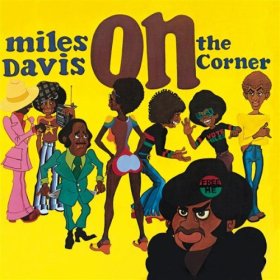
On the Corner is a studio album by the American jazz trumpeter, bandleader, and composer Miles Davis. It was recorded in June and July 1972 and released on October 11 of that year by Columbia Records. The album continued Davis' exploration of jazz fusion, and explicitly drew on the influence of funk musicians Sly Stone and James Brown, the experimental music of Karlheinz Stockhausen, the free jazz of Ornette Coleman, and the work of collaborator Paul Buckmaster.

Tutu is an album by jazz trumpeter Miles Davis, released in 1986 by Warner Bros. Records. The album is Miles Davis' tribute to Archbishop Desmond Tutu who was a human rights and anti-apartheid activist. It was recorded primarily at Capitol Studios in Los Angeles and Clinton Recording in New York, except the song "Backyard Ritual", which was recorded at Le Gonks in West Hollywood. Davis received the 1986 Best Jazz Instrumental Performance, Soloist Grammy Award for his performance on the album.

In All Languages is a 1987 double album by Ornette Coleman. Coleman and the other members of his 1950s quartet, trumpeter Don Cherry, bassist Charlie Haden, and drummer Billy Higgins, performed on one of the two records, while his electrified ensemble, Prime Time, performed on the other. Many of the songs on In All Languages had two renditions, one by each group.
Marvin "Smitty" Smith is an American jazz drummer and composer.

Chris Kelsey is an American-born jazz saxophonist, composer, music critic, and novelist. His music draws on bebop, free jazz, free improvisation, funk, and fusion, and is augmented by elements of non-tonal, contemporary classical music. His fiction is inspired by such crime writers as Raymond Chandler, Jim Thompson, and Dashiell Hammett. As a musician, Kelsey has worked almost exclusively as a leader of his own ensembles, usually trios and quartets. From the late 1980s, his principal instrument has been soprano saxophone, though in recent years he has recorded and performed on tenor and alto, as well. Kelsey has recorded nearly twenty albums under his own name, many for the C.I.M.P. label. With rare exceptions, he has recorded and performed his own original compositions. His first novel, Where the Hurt Is, was published in 2018 by Black Rose Writing. As a critic, he has written for leading jazz publications and web sites, including Jazziz, JazzTimes, Cadence, AllMusic, and Jazz.com.
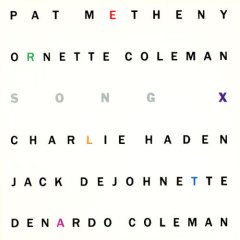
Song X is a collaborative studio album by American jazz guitarist Pat Metheny and saxophonist Ornette Coleman. It is a free jazz record that was produced in a three-day recording session in 1985. The album was released in 1985 by Geffen Records.
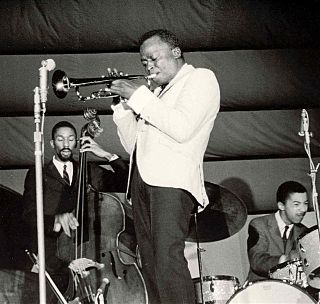
The Miles Davis Quintet was an American jazz band from 1955 to early 1969 led by Miles Davis. The quintet underwent frequent personnel changes toward its metamorphosis into a different ensemble in 1969. Most references pertain to two distinct and relatively stable bands: the First Great Quintet from 1955 to 1958, and the Second Great Quintet from late 1964 to early 1969, Davis being the only constant throughout.

In Concert is a live double album by the American jazz musician Miles Davis. It was recorded in 1972 at the Philharmonic Hall in New York City. Columbia Records' original release did not credit any personnel, recording date, or track listing, apart from the inner liner listing the two titles "Foot Fooler" and "Slickaphonics."
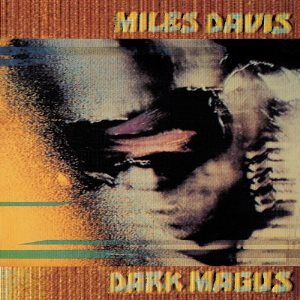
Dark Magus is a live double album by the American jazz trumpeter, composer, and bandleader Miles Davis. It was recorded on March 30, 1974, at Carnegie Hall in New York City, during the electric period in Davis' career. His group at the time included bassist Michael Henderson, drummer Al Foster, percussionist Mtume, saxophonist Dave Liebman, and guitarists Pete Cosey and Reggie Lucas; Davis used the performance to audition saxophonist Azar Lawrence and guitarist Dominique Gaumont. Dark Magus was produced by Teo Macero and featured four two-part recordings, titled with the Swahili numerals for numbers one through four.

Of Human Feelings is an album by American jazz saxophonist, composer, and bandleader Ornette Coleman. It was recorded on April 25, 1979, at CBS Studios in New York City with his band Prime Time, which featured guitarists Charlie Ellerbee and Bern Nix, bassist Jamaaladeen Tacuma, and drummers Calvin Weston and Coleman's son Denardo. It followed the saxophonist's failed attempt to record a direct-to-disc session earlier in March of the same year and was the first jazz album to be recorded digitally in the United States.

Sound Museum: Hidden Man is an album by the American jazz composer and saxophonist Ornette Coleman recorded in 1996 and released on the Harmolodic/Verve label. It is dedicated to Don Cherry and Ed Blackwell.

Sound Museum: Three Women is an album by the American jazz composer and saxophonist Ornette Coleman recorded in 1996 and released on the Harmolodic/Verve label. It is dedicated to Don Cherry and Ed Blackwell.

Rhythm Killers is an album by Jamaican musical duo Sly and Robbie, released in May 1987 by Island Records. By the time of the album's recording, Sly and Robbie had transitioned away from their prolific work in the reggae genre. They spent the 1980s experimenting with electronic sounds and contemporary recording technology on international, cross-genre endeavors, which influenced their direction for Rhythm Killers.
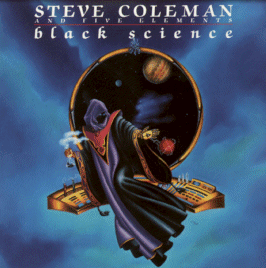
Black Science is an album by saxophonist Steve Coleman and his band Five Elements, recorded in 1990 and released on the Novus label.

Silent Assassin is an album by the Jamaican musicians Sly and Robbie, released in 1989 via Island Records.
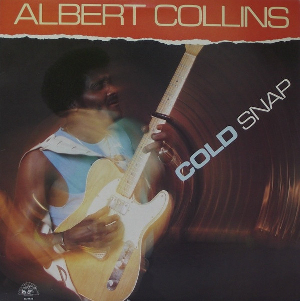
Cold Snap is an album by the American blues musician Albert Collins, released in 1986. The album was nominated for a Grammy Award in the "Best Traditional Blues Recording" category. Collins supported the album with a North American tour.
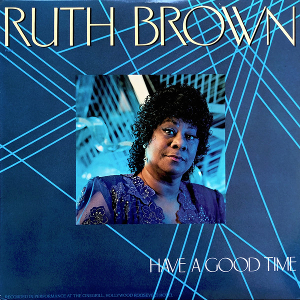
Have a Good Time is a live album by the American R&B singer Ruth Brown, released in 1988. Her first album for Fantasy Records, it was a factor in Brown's late 1980s career resurgence.


















